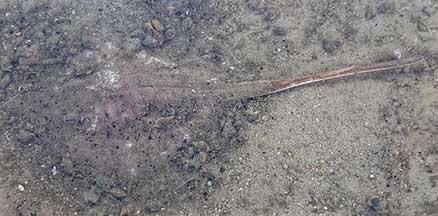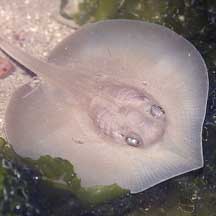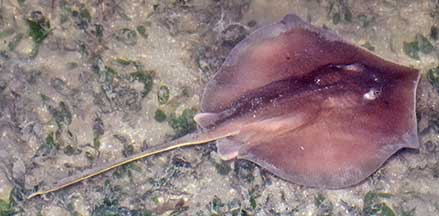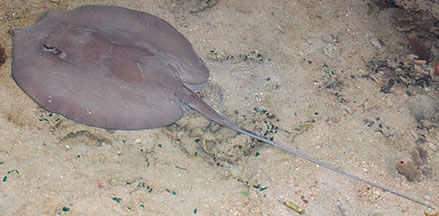 |
|
| fishes text index | photo index |
| Phylum Chordata > Subphylum Vertebrate > fishes > Order Rajiformes > Family Dasyatidae |
| Mangrove
whipray Himantura walga Family Dasyatidae updated Sep 2020 Where seen? This plain stingray with a sharp pointed snout is sometimes seen on our Northern shores, usually on muddy shores. It is more active at night and at high tide. Small ones are sometimes also seen trapped in pools in the seagrass meadows at low tide. Features: Grows to about 25cm in diameter, those seen about 15-20cm. Body generally oval with a pointed snout. Body colour plain beige or pinkish without any markings. Tail long and whip-like without markings. It does not have a skin fold on the tail. The female has a shorter tail with a bulbous end. It has 4-6 enlarged spear-like spines on the tail which can cause a painful wound by injecting a venom. Sometimes mistaken for a horseshoe crab and visa versa. In murky waters, these two different animals do have a similar profile, both being round and flat with a long tail. But the horseshoe crab moves very differently- creeping slowly, while the stingray can dash away quickly. |
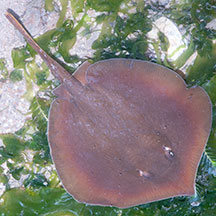 This one seems to have a broken tail. Pulau Sekudu, Apr 09 |
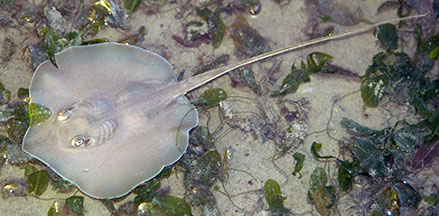 Small one. Chek Jawa, May 03 |
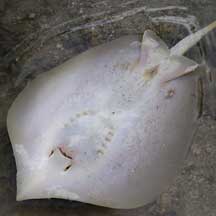 Underside. Underside.Pulau Sekudu, May 04 |
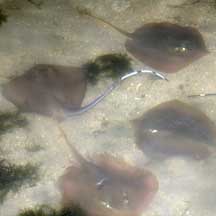 Blue-spotted stingrays and Mangrove whiprays in a sandy lagoon. Pulau Sekudu, Apr 06 |
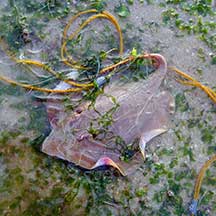 Often seen trapped in fishing nets. Changi, Jul 11 |
| Human uses: It is harvested commercially as a food fish. According to FishBase: It is caught in large quantities as by-catch of bottom trawl and trammel net fisheries. It is often seen among the fishes trapped in abandoned fishing nets and traps on our shores. |
| Mangrove whiprays on Singapore shores |
On wildsingapore
flickr
|
| Other sightings on Singapore shores |
Links
|
